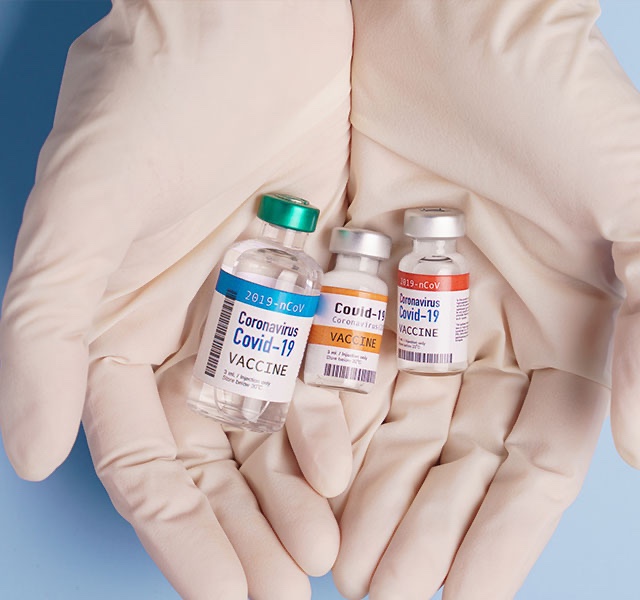The 20th and 21st centuries have been a time of great medical advancements and new technology that has been able to save countless lives through all the different outbreaks of disease humankind has had to face. One that is all too familiar, and impacted everyone’s lives was the COVID-19 pandemic, which plunged us into a time when our entire lives were turned upside down. Life as we had known it was gone But, things have changed, life is almost as it was and we have one thing to thank for it, the COVID vaccine, otherwise known as an mRNA vaccine. MRNA technology can be used not only to develop new vaccines for diseases that do not have available vaccines yet, but also to replace vaccines that are already in use because of the inexpensive and simple production process, in addition to it often being safer than traditional vaccines.
While the general public understands mRNA vaccines to be a fairly new piece of tech brought on by the COVID-19 pandemic, mRNA vaccinology has actually been in the works for upwards of 60 years. “The mRNA molecule was first described by Brenner and colleagues in 1961… It was not until 1969 that the first protein was produced in vitro from isolated mRNA…In 1984, Krieg and colleagues were the first to employ SP6 RNA polymerase to successfully transcribe and synthesize mRNA in vitro, establishing the foundation for subsequent in vitro mRNA studies.” (Fang, Liu, Li, Zhang, Sing, Zhu, Wu, Liu, Zhao, and Li, 2022). The first trial tests of mRNA vaccines were done on mice for a strand of the flu in the ’90s, and being largely successful, would continue to develop further, so much so that mRNA vaccines could be successfully used on humans to treat outbreaks of disease around the globe. “The first mRNA vaccines for rabies were tested in humans in 2013…The first mRNA vaccines using these fatty envelopes were developed against the deadly Ebola virus” (Beyrer, 2021), and while mRNA vaccinology wouldn’t hit any mainstream success in the US at this time, when the COVID-19 pandemic hit and the world needed a vaccine, mRNA was able to step up to the plate, and within months of research a vaccine was developed, tested, and given out to the public. This vaccine became a lifesaver, and though it was available to those already sick, it prevented millions of adults and children from getting sick with the virus. MRNA technology was able to slow down the rapid spread of COVID-19 due to several reasons, including that it was incredibly easy to produce due to its simple development process and “flexibility to respond to new variants, and the capacity to induce better immune response.”(Fang, Liu, Li, Zhang, Sing, Zhu, Wu, Liu, Zhao, and Li, 2022).
The main reason as to why it would be so beneficial to transfer all vaccines to mRNA technology, is that mRNA, to a certain degree is safer than the vaccines we already have out today because,the vaccines we have out today use a form of the virus within the vaccine, whereas mRNA vaccines have only a single viral protein which then multiplies and destroys the virus, meaning that there is no possible way for someone to get infected, according to Springfield Greene County Health in their article on MRNA technology. This ultimately makes it safer than the vaccines we are currently using. The use of this single viral protein also makes the industrialization process cheaper and less complicated than most modern vaccines, (MRNA technology | Springfield – Green County Health, n.d.) another reason as to why mRNA vaccines would be beneficial to replace the kinds of vaccines we are mass producing today. MRNA technology is more than just the cure for COVID-19, in fact, researchers have already been using and testing mRNA vaccines on a multitude of different viruses and diseases and have seen substantial results in doing so. “mRNA vaccines are being tested for other infectious agents, such as Ebola, Zika virus, and influenza. The mRNA vaccine technology also is being tested as a treatment for cancer. Cancerous cells create unique pieces of protein that are not found in healthy cells. A vaccine that produces those pieces can educate the immune system to attack those cells. Progress recently was reported with melanoma…Theoretically, mRNA technology also could produce proteins missing in certain diseases like cystic fibrosis, sickle cell anemia, or diabetes.” (Komaroff, A. L., 2021).
Diseases that have been long accepted to be “un-curable” now have the possibility to be cured using a single vaccine. MRNA vaccines, while seeming new ,“underdeveloped” and an unnecessary step forward in healthcare to some, may be the world’s best chance at not only curing diseases that we have never been able to cure before, but saving time, money, and effort with the vaccines we already have out today and ultimately, saving millions of lives now and in the future.
































